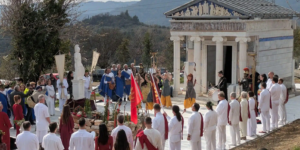The site initially began to develop as a loosely connected group of buildings where learned persons resided, worked and taught. Over the years, additional buildings were added; rulers made donations and more scholars migrated there. Gradually a large campus developed, which became a celebrated seat of learning in the ancient world.
- Not only Indians but also students from as far as Babylonia, Greece, Syria, Arabia, Phoenicia and China came to study.
- 68 different streams of knowledge were on the syllabus.
- A wide range of subjects were taught by experienced masters: Vedas, Language, Grammar, Philosophy, Medicine, Surgery, Archery, Politics, Warfare, Astronomy, Astrology, Accounts, Commerce, Futurology, Documentation, Occult, Music, Dance, etc.
- The minimum entrance age was 16 and there were 10,500 students.
- The panel of masters included renowned names like Kautilya (the author of the “Arthashastra”), Panini (the codifier of Sanskrit into today’s form), Jivak (medicine) and Vishnu Sharma (author and compiler of the Panchtantra).
When Alexander’s armies came to the Punjab in the fourth century B.C., Takshashila had already developed a reputation as an important seat of learning. Thus on his return Alexander took many scholars from there with him to Greece.
Being near the north-west frontier of India, Takshashila had to face the brunt of attacks and invasions from the north and the west. Thus the Persians, Greeks, Parthians, Shakas and Kushanas laid their destructive marks on this institution. The final blow, however, came from the Huns (also the destroyers of the Roman Empire) who, A.D. c.450, razed the institution. When the Chinese traveller Huen T’sang (A.D. 603-64) visited Takshashila, the town had lost all its former grandeur and international character.
































विद्या ददाति विनयम
Dear Friends recently I read 2 books by Rajiv Malhotra and I feel I should recommend it to you (esp people from Dharmic religion).Read More